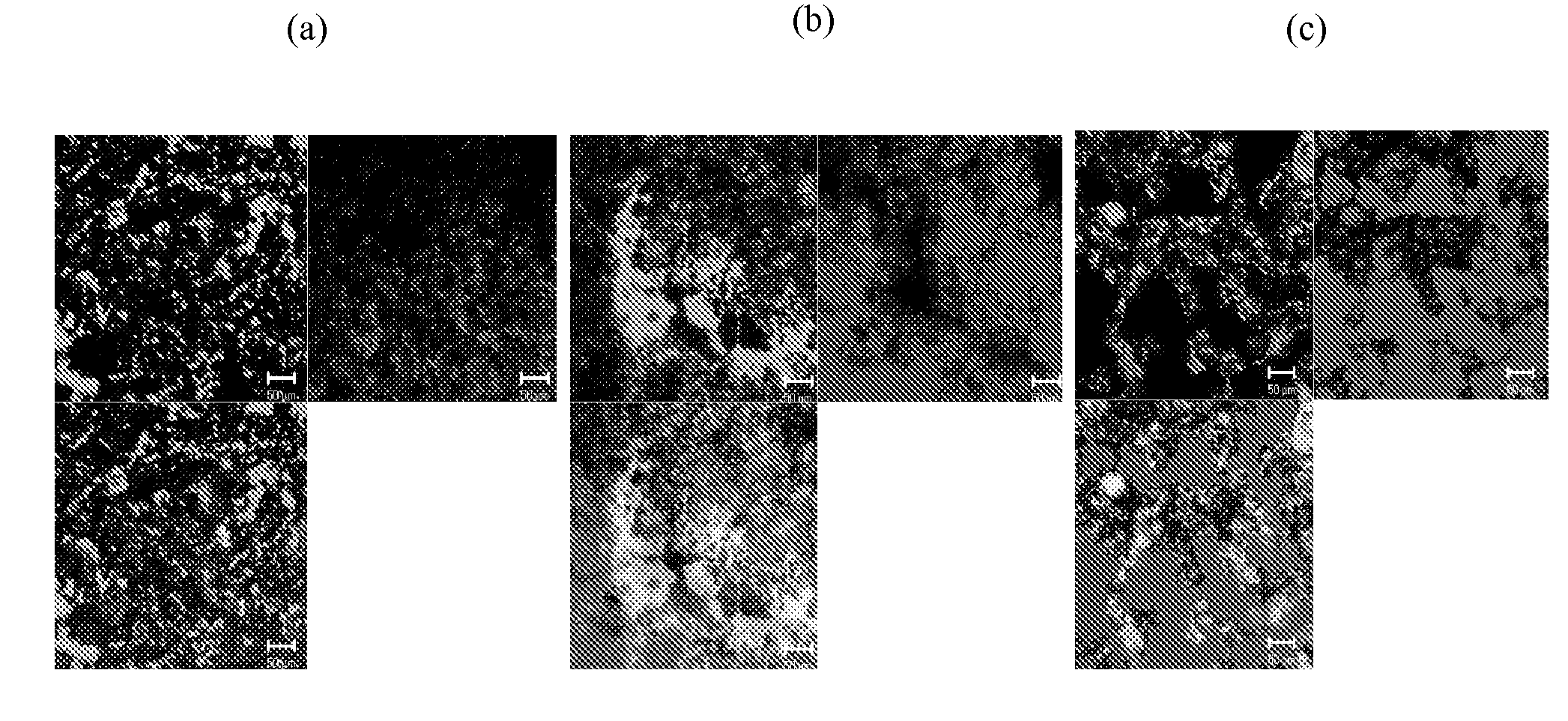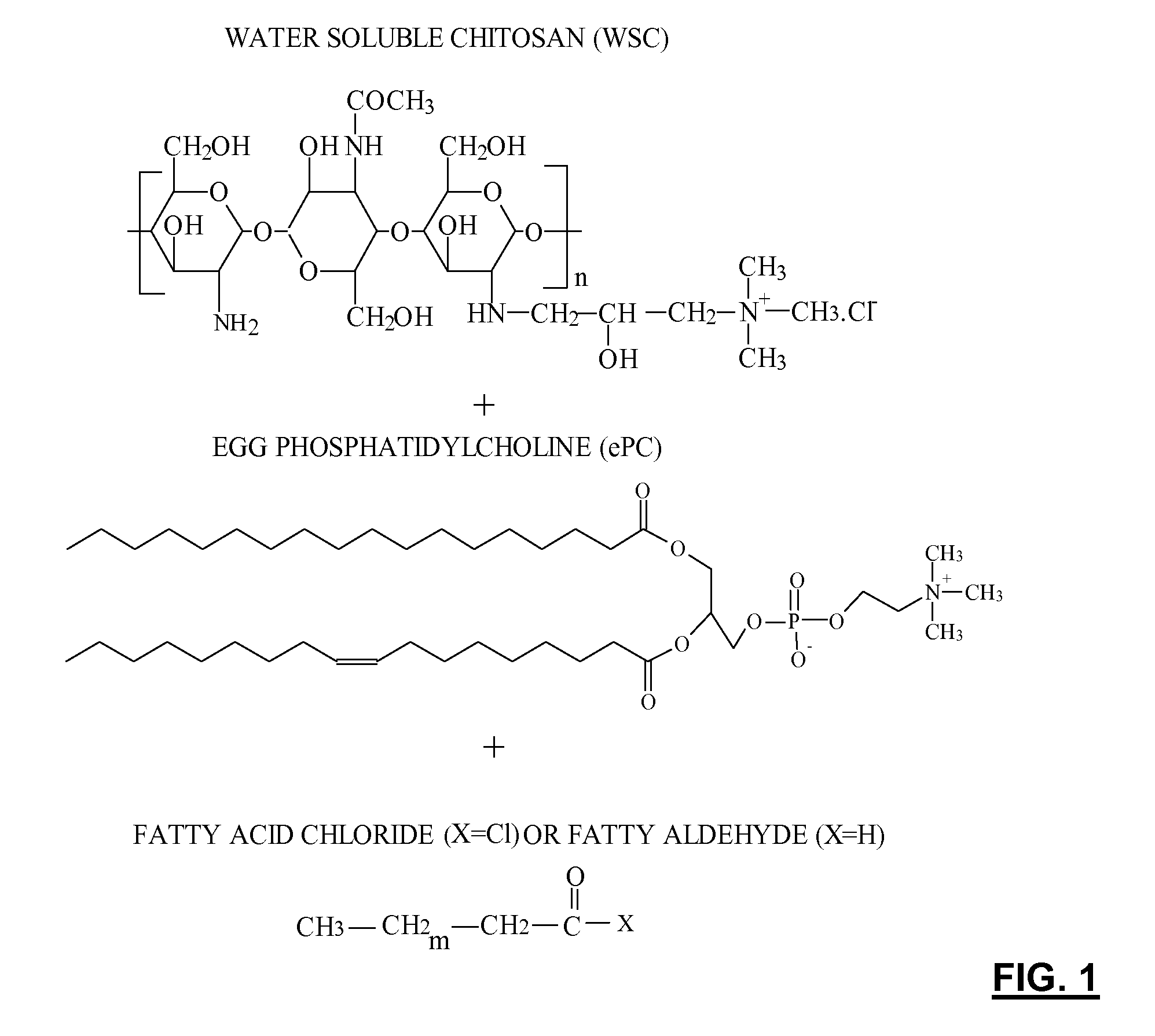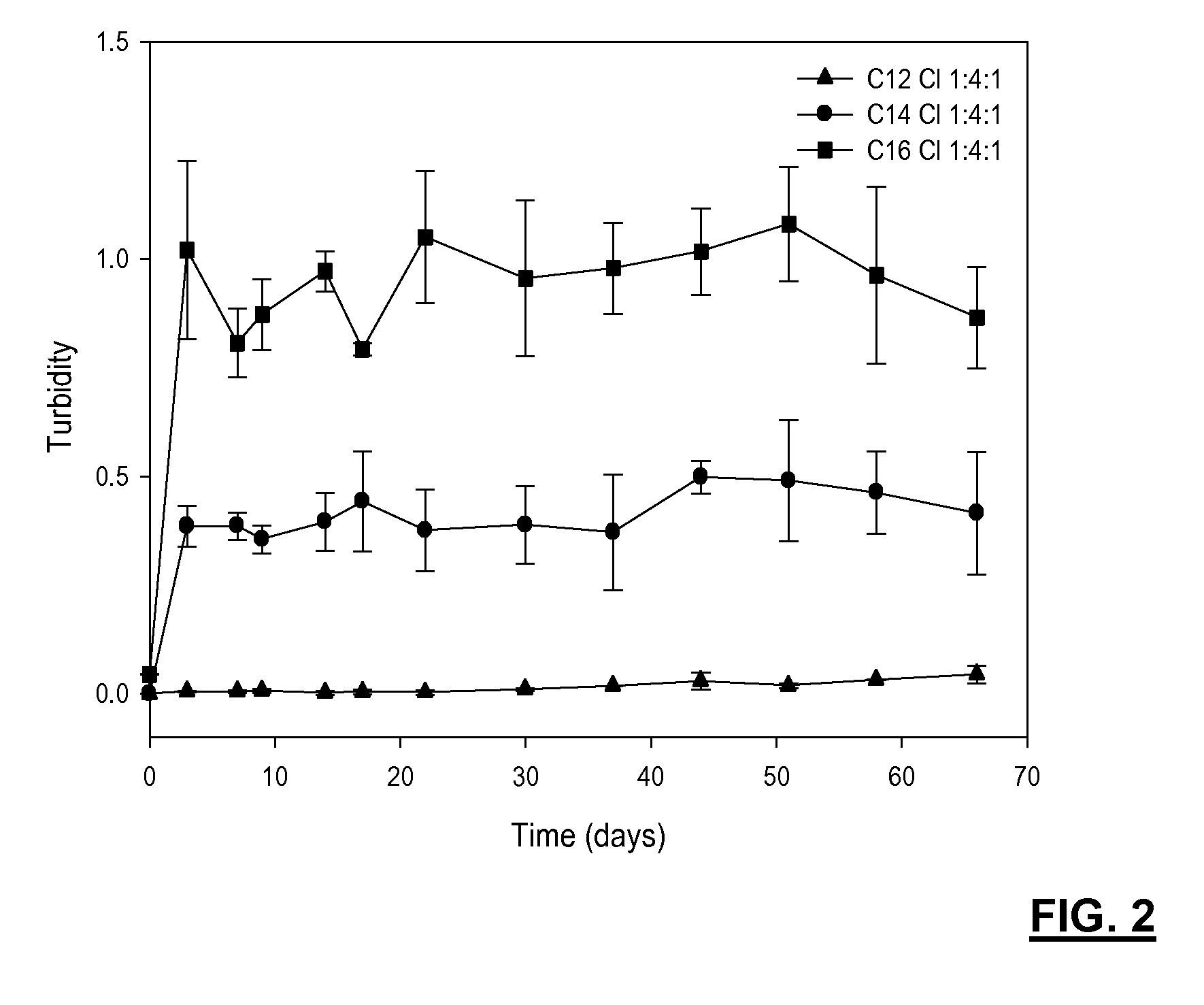Injectable polymer-lipid blend
a technology of polymer lipids and blends, applied in the direction of phosphorous compound active ingredients, drug compositions, peptide/protein ingredients, etc., can solve the problems of lack of drug effectiveness, many pharmaceutical agents failing to reach the target organ in an effective concentration, and ineffectiveness, so as to reduce the dosage of therapeutic agents, reduce toxicities or side effects, and reduce the frequency of drug administration
- Summary
- Abstract
- Description
- Claims
- Application Information
AI Technical Summary
Benefits of technology
Problems solved by technology
Method used
Image
Examples
example 1
Preparation and Analysis of Injectable System
[0084]In a study, FA varying in chain length from C8 to C16 were mixed with WSC and ePC to develop a stable injectable blend for drug delivery. Thermal analysis was used to determine the stability of the blend components at body temperature. FTIR measurements were employed to investigate the interactions present between the components in order to optimize the stability of the blend. Morphological examination provided an indication of the functionality of each of the components within the formulation at a microscale level. Also, to determine the optimal blend for use as an injectable formulation, rheological and stability measurements were required. Lastly, the release of the anticancer agent PTX from the WSC-FA-ePC blends was evaluated in physiological solution. Relationships between the composition of the WSC-FA-ePC blend and its properties were identified in order to optimize the performance of the blends for pharmaceutical applications...
example 2
Composition with Lauroyl Chloride
[0112]An injectable polymer-lipid blend including lauroyl chloride was prepared to assess cell viability. The composition included a low molar weight WSC, C12 Cl and ePC in ratios of 1:3:1 and 1:4:1. The ePC was dissolved with lauroyl chloride (C12 Cl) and vortexed to dissolve. Water soluble chitosan (WSC) was then added, and the blend was further vortexed and then transferred to a 1 cc syringe. The composition in the syringe was then sterilized with UV sterilizer for 24 hours. The in vitro biocompatibility of L929 cells in the presence of the blends (1:3:1 and 1:4:1) were assessed after 24 hours of incubation, as shown in FIG. 11. Error bars are expressed as standard error (n=12).
example 3
Blend with Laurinaldehyde
[0113]A composition was prepared including WSC (low MW), laurinaldehyde and ePC in ratios of 1:2:1, 1:2:3, 2:2:3, 1:3:1 and 1:4:1. The compositions were prepared by dissolving ePC with the laurinaldehyde and vortexed, followed by the addition of WSC and further vortexed to blend components, and then transferred to a 1 cc syringe. As an indication of stability, turbidity of the blend formulations, incubated in 0.01 M phosphate buffer solution (pH=7.4) containing 2 mg / mL lysozyme at 37° C., is shown in FIG. 12 and FIG. 13.
[0114]Further compositions were prepared comprising WSC (low and high MW), laurinaldehyde and ePC in ratios of 1:3:1 and 1:4:1 along with 10 mg of paclitaxel. The paclitaxel was added in ethanol and the solvent was fully evaporated. The components were vortexed in stages before transferred to a 1 cc syringe. Partition coefficients (Kv) of paclitaxel according to the formula:
KV=PTXconc.(blend)PTXconc.(soloution)
in the various blend formulation...
PUM
 Login to View More
Login to View More Abstract
Description
Claims
Application Information
 Login to View More
Login to View More - R&D
- Intellectual Property
- Life Sciences
- Materials
- Tech Scout
- Unparalleled Data Quality
- Higher Quality Content
- 60% Fewer Hallucinations
Browse by: Latest US Patents, China's latest patents, Technical Efficacy Thesaurus, Application Domain, Technology Topic, Popular Technical Reports.
© 2025 PatSnap. All rights reserved.Legal|Privacy policy|Modern Slavery Act Transparency Statement|Sitemap|About US| Contact US: help@patsnap.com



